How Blockchain Is Disrupting Traditional Banking Systems
Blockchain is transforming banking with faster transactions, lower costs, enhanced security, and decentralized financial services.

The global economic landscape undergoes a seismic change. The center of this change utilizes a blockchain technique, a decentralized, transparent, and secure digital ledger system. When a fringe innovation related to Cryptocurrency, such as Bitcoin, is considered, blockchain has now emerged as a malignant force that challenges the very basis of traditional banking systems.
From transaction processing to customer confidence, regulatory compliance for effectiveness, blockchain is not just tweaking edges, it is to rewrite the rules.
What Is Blockchain?
Blockchain is a distributed ledger technology (DLT) that records transactions in a network of computers. Each transaction is divided into a “block” and when it is confirmed, it is added to a series of previous transactions. Large properties include:
- Decentralization: No central authority controls data.
- Inaccurate: When the data is registered, the data cannot be replaced.
- Openness: All participants can check the account book.
Security: Cryptographic techniques ensure data integrity and privacy.
These properties make blockchain a compelling alternative to traditional banking systems, which rely on centralized databases and intermediaries.
Disruption in Transaction Processing
Blockchain is redefining how financial transactions are executed, offering speed, efficiency, and cost savings that challenge legacy systems.
Traditional Banking
In conventional banking systems, transaction processing is often slow and expensive due to reliance on multiple intermediaries:
- Transactions typically involve clearinghouses, correspondent banks, and other third parties.
- Settlement times can range from several hours to multiple days, especially for cross-border payments.
- High transaction fees are common, driven by intermediary costs and manual reconciliation.
Blockchain Advantage
Blockchain technology introduces a streamlined, peer-to-peer model that minimizes friction and delays:
- Direct transactions between parties eliminate the need for intermediaries.
- Near-instant settlement ensures that transactions are confirmed within seconds or minutes, drastically improving efficiency.
- Lower costs result from reduced overhead, fewer third-party fees, and automation through smart contracts.
Real-World Example
Ripple’s blockchain-based payment protocol is a prime example of this transformation:
- It enables cross-border payments in seconds, offering a stark contrast to SWIFT’s traditional multi-day process.
- Financial institutions using Ripple benefit from real-time liquidity, transparent fees, and enhanced customer experience.
Enhanced Security and Trust
In an era of rising cyber threats and eroding consumer confidence, blockchain offers a powerful alternative to traditional banking infrastructure.
Traditional Banking Challenges
Despite their scale and sophistication, conventional banking systems face persistent vulnerabilities:
- Centralized databases are attractive targets for hackers, making them prone to large-scale cyberattacks.
- Data breaches can severely damage customer trust and lead to regulatory penalties.
- Fraud detection is often reactive, relying on post-event analysis rather than proactive prevention.
Blockchain Solutions
Blockchain introduces a paradigm shift in how financial institutions secure data and build trust:
- Decentralized architecture eliminates single points of failure, making systems more resilient to attacks.
- Immutable records ensure that once data is written, it cannot be altered or deleted, drastically reducing the risk of fraud and manipulation.
- Real-time auditing allows regulators and institutions to monitor transactions instantly, fostering transparency and accountability.
Major financial players like JPMorgan and Goldman Sachs are actively investing in blockchain technologies to fortify their security frameworks and streamline operations, signaling a broader industry shift toward decentralized trust models.
Cost Reduction and Operational Efficiency
Blockchain slashes operational costs by:
- Automating processes with smart contracts.
- Reducing paperwork and manual reconciliation.
- Minimizing errors and fraud.
According to a study by iCert Global, blockchain can significantly reduce transaction processing costs and improve efficiency across banking operations.
Regulatory Challenges and Compliance
While blockchain offers immense benefits, it also introduces regulatory complexities:
- Jurisdictional ambiguity: Cross-border transactions raise legal questions.
- Data privacy concerns: Transparency may conflict with confidentiality laws.
- Compliance integration: Legacy systems struggle to adapt.
Governments and central banks are exploring central bank digital currencies (CBDCs) to harness the potential of blockchain while maintaining regulatory oversight.
Changing Role of Banks
Blockchain threatens the traditional role of banks as intermediaries. With decentralized finance (DeFi) platforms offering lending, borrowing, and trading without banks, the industry faces existential questions:
- Will banks become obsolete?
- Can they reinvent themselves as blockchain custodians or infrastructure providers?
Forward-thinking banks are already pivoting—offering crypto custody services, launching blockchain-based platforms, and partnering with fintech startups.
Real-World Applications
Blockchain technology is no longer just theoretical, it’s actively reshaping how financial institutions operate across the globe. Below are some of the most impactful use cases:
1. Cross-Border Payments
Traditional cross-border payments are often slow, expensive, and opaque, involving multiple intermediaries and currency conversions. Blockchain streamlines this process by enabling real-time, low-cost international transactions with enhanced transparency.
- Example: Santander’s One Pay FX leverages Ripple’s blockchain to facilitate faster, more secure international money transfers. Customers can send payments across borders in seconds, with full visibility into fees and exchange rates—something traditional systems like SWIFT struggle to offer.
- Impact: This reduces settlement times from days to minutes, lowers transaction fees, and improves customer satisfaction.
2. KYC and Identity Verification
Know Your Customer (KYC) procedures are essential for compliance and fraud prevention, but they are often redundant, time-consuming, and costly for banks and customers alike.
- Blockchain Solution: A decentralized identity system allows users to store and share verified credentials securely. Once a customer’s identity is validated on one platform, it can be reused across institutions without repeating the process.
- Benefits:
- Reduces duplication of effort across banks.
- Enhances data privacy and control for users.
- Speeds up onboarding and reduces operational costs.
Several startups and consortia, like SelfKey and Civic, are pioneering blockchain-based identity solutions that could become industry standards.
3. Trade Finance
Trade finance involves complex documentation, multiple parties, and high risk of fraud or delays. Blockchain simplifies this by introducing smart contracts and digital ledgers that automate and secure the entire process.
- Smart Contracts: These are self-executing contracts with terms directly written into code. They trigger actions (like payment release) when predefined conditions are met.
- Use Case: Platforms like Marco Polo and we.trade use blockchain to digitize trade finance workflows, reducing reliance on paper documents and manual verification.
- Outcome:
- Faster transaction cycles.
- Reduced risk of fraud and disputes.
- Improved transparency and trust among trading partners.
4. Lending and Credit Scoring
Access to credit is often limited by outdated scoring models and centralized control. Blockchain and Decentralized Finance (DeFi) are reshaping lending by offering permissionless, collateral-based loans.
- How It Works: Users can lock crypto assets (like Ethereum or Bitcoin) as collateral and receive loans in stablecoins or other tokens—without needing a credit history or bank approval.
- Platforms: Protocols like Aave, Compound, and MakerDAO are leading this revolution, enabling peer-to-peer lending with transparent interest rates and automated repayments.
- Advantages:
- Democratizes access to credit.
- Eliminates bias in credit scoring.
- Offers real-time liquidity and flexible terms.
This model is especially powerful in underserved regions where traditional banking infrastructure is weak or inaccessible.
The Future of Banking in a Blockchain World
The banking industry is at a crossroads. Blockchain is not just a disruptive force—it’s a transformative one. The future may see:
- Hybrid models combining centralized oversight with decentralized infrastructure.
- Tokenized assets are replacing traditional securities.
- Programmable money enabling dynamic financial contracts.
Banks that embrace blockchain will thrive. Those that resist may fade into irrelevance.
Conclusion
Blockchain is not merely a technological upgrade; it’s a paradigm shift. By decentralizing trust, automating processes, and enhancing transparency, it challenges the very essence of traditional banking. As adoption grows, banks must evolve or risk being left behind.
The disruption is real. The revolution is underway. And the future of finance is being written, block by block.
Date
3 months agoShare on
Related Blogs

The Hurdles to a Truly Decentralized Exchange Future
22 hours ago

Smart Contracts vs Traditional Contracts: What Businesses Need to Know
17 days ago

From Texts to Trust: How Blockchain Makes Messaging Safer
24 days ago

Bitcoin vs Gold: Is the Comparison Still True in 2025?
29 days ago








